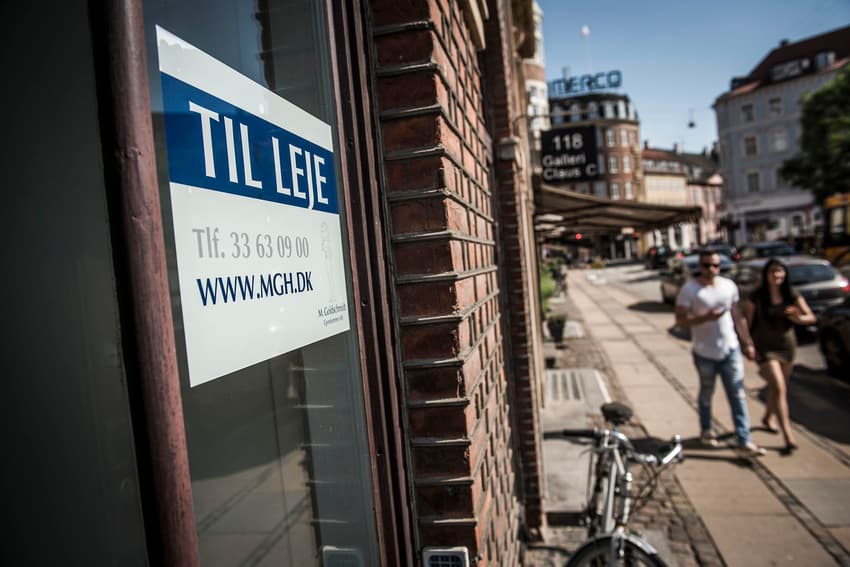Denmark plans temporary limit on rent increases

Current rules in Denmark allow landlords to increase rents in line with general inflation. The government wants to place a temporary block on such increases.
Looking to move? Find your next rental apartment here.
The Danish government is to propose a temporary limit on how much private landlords can increase rents.
Under the current Renting Law (Lejeloven), tenants are permitted to let rents follow inflation – which is currently at its highest level for 39 years.
“There is no doubt that with the very extreme inflation that we have at the moment, many groups will be impacted,” interior and housing minister Christian Rabjerg Madsen said.
“We have a situation on the private rental market where some landlords can look forward to very drastic rent increases,” he said.
The limit on rent hikes would be temporary and limit rent increases to a maximum of 4 percent over a two-year period. Inflation in July was calculated at 8.7 percent.
The minister said the measure would take the form of an immediate intervention, meaning it would apply to existing rental agreements and not just those which are signed after the new rule takes effect.
It would also apply retroactively to rents that have been raised in recent months, he said.
“It’s obvious that when there’s a possibility that tenants can put rents up by a potential 8-9 percent, there’s also a risk that some will do that. And that could have drastic consequences,” Madsen said.
In addition to the temporary limit, the government wants to introduce a new, permanent index that would regulate rents.
The index should be independent of increasing energy and food prices, Madsen said.
The government has previously said it cannot compensate the population in general for increasing prices due to concerns this could exacerbate inflation.
“The reason this proposal does not further push inflation up is that we are not pumping more money into society,” Madsen said.
Around 180,000 private tenants in Denmark face possible rent increases at the turn of the year, according to tenants’ interest group Lejernes Landsorganisation.
READ ALSO: EXPLAINED: What is a Danish ‘housing association’?
Comments
See Also
The Danish government is to propose a temporary limit on how much private landlords can increase rents.
Under the current Renting Law (Lejeloven), tenants are permitted to let rents follow inflation – which is currently at its highest level for 39 years.
“There is no doubt that with the very extreme inflation that we have at the moment, many groups will be impacted,” interior and housing minister Christian Rabjerg Madsen said.
“We have a situation on the private rental market where some landlords can look forward to very drastic rent increases,” he said.
The limit on rent hikes would be temporary and limit rent increases to a maximum of 4 percent over a two-year period. Inflation in July was calculated at 8.7 percent.
The minister said the measure would take the form of an immediate intervention, meaning it would apply to existing rental agreements and not just those which are signed after the new rule takes effect.
It would also apply retroactively to rents that have been raised in recent months, he said.
“It’s obvious that when there’s a possibility that tenants can put rents up by a potential 8-9 percent, there’s also a risk that some will do that. And that could have drastic consequences,” Madsen said.
In addition to the temporary limit, the government wants to introduce a new, permanent index that would regulate rents.
The index should be independent of increasing energy and food prices, Madsen said.
The government has previously said it cannot compensate the population in general for increasing prices due to concerns this could exacerbate inflation.
“The reason this proposal does not further push inflation up is that we are not pumping more money into society,” Madsen said.
Around 180,000 private tenants in Denmark face possible rent increases at the turn of the year, according to tenants’ interest group Lejernes Landsorganisation.
READ ALSO: EXPLAINED: What is a Danish ‘housing association’?
Join the conversation in our comments section below. Share your own views and experience and if you have a question or suggestion for our journalists then email us at [email protected].
Please keep comments civil, constructive and on topic – and make sure to read our terms of use before getting involved.
Please log in here to leave a comment.